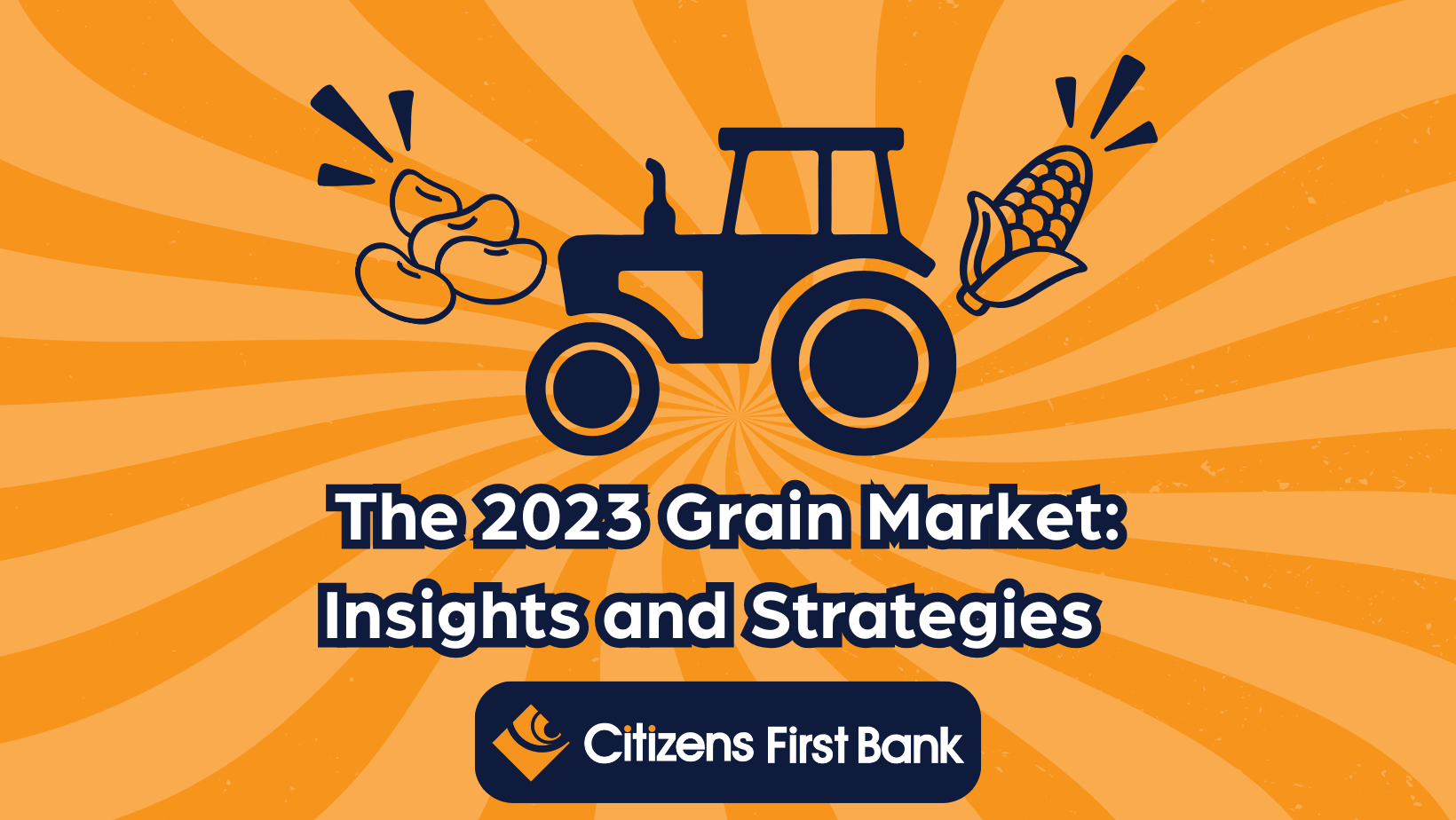
November 27, 2023
In the blink of an eye, the ease of selling grain that characterized the early months of 2023 has transformed into a complex challenge for farmers across the nation. As trusted partners in your agricultural journey, Citizens First Bank understands the pressing concerns and uncertainties surrounding the current state of the grain market. We’ll explore factors that are influencing the shift in grain prices and basis levels, providing valuable insights and strategies to help you make informed decisions during these challenging times.
The fall of 2023 brought unexpected changes to the agricultural landscape. To comprehend the reasons behind the weakening of futures and basis levels, we must examine key factors influencing the market.
The USDA’s downward revision of U.S. export volume estimates reflects growing concerns within the industry. Buyers are increasingly turning to South America for soybeans and corn due to a rebound in new crop production after last year’s La Nina-induced shortage. Compounding the issue, a strengthened U.S. dollar and logistical challenges, such as low water levels and elevated Panama Canal rates, have driven up shipping costs. As approximately 14% of U.S. corn usage and over 40% of U.S. soybean crops rely on exports, understanding these dynamics is crucial for anticipating market movements.
Uncertainty surrounding the extension of the Black Sea grain agreement and the supply of fertilizer from the region adds another layer of complexity. While not the primary cause, developments in this region can impact prices and should be closely monitored.
Traditional drivers of U.S. grain demand, such as ethanol and biodiesel, face challenges amid projections of stagnant gasoline consumption. Sustainable aviation fuel and renewable diesel are emerging as critical factors, signaling a shift in the industry landscape.
For farmers with accessible storage options, there is still an opportunity to navigate the current period of lower prices. Citizens First Bank suggests considering the following strategies:
Extend December grain contracts and hedges by several months to capture market carry premiums and potentially benefit from a stronger basis.
Another thing for farmers to consider is the interest-carrying cost if they have any Operating Lines of Credit. Holding Grain may not benefit too much if they have carrying costs financed.
For grain that must be sold near harvest or cannot be stored cost-effectively, consider a call replacement strategy to facilitate the release of physical grain.
Develop a basic marketing plan that sets target prices with specific dates to trigger sales for the 2023 crop. This allows for incorporating individual price expectations while maintaining discipline in sales timing, reducing risk associated with price assessments.
Re-entering the selling mindset amid the challenges of the current grain market may seem daunting, but timely information and well-informed decisions are the keys to moving forward. At Citizens First Bank, we stand ready to support farmers by providing Agricultural Loans and facilitating access to loans through the FSA. As you navigate these uncertain times, trust us to be your financial partner, offering insights and assistance to help you make the best decisions for your farm’s future.
Citizens First Bank – Member FDIC and an Equal Housing Lender